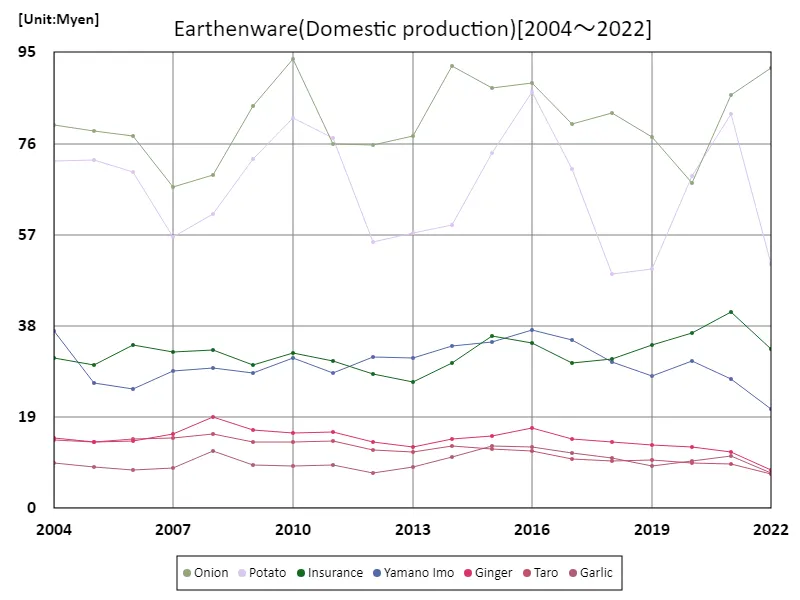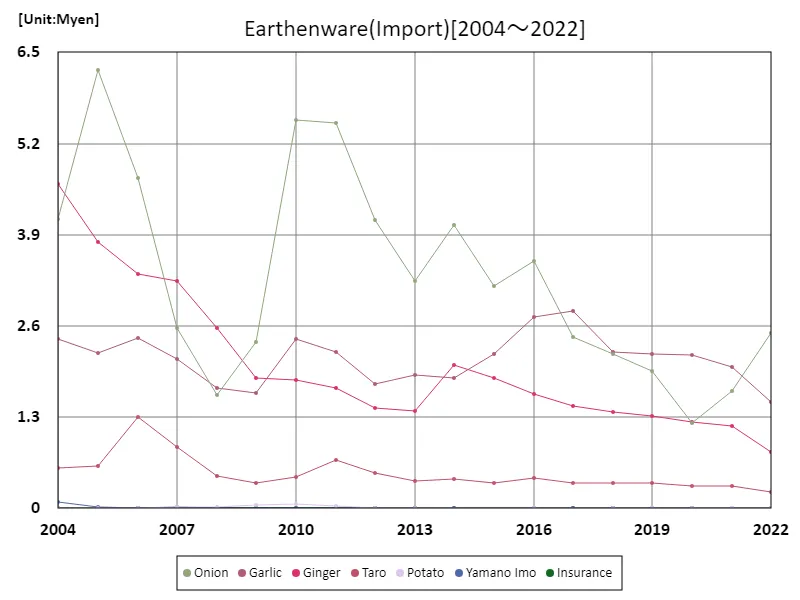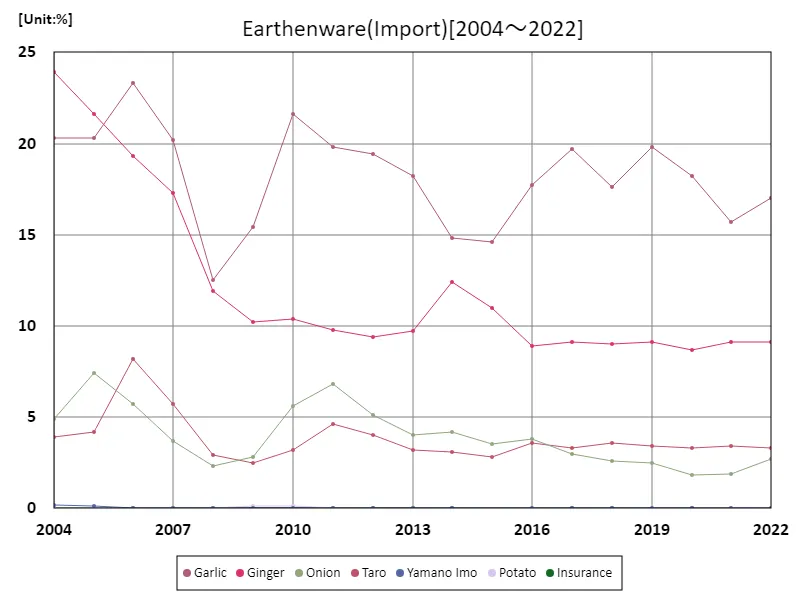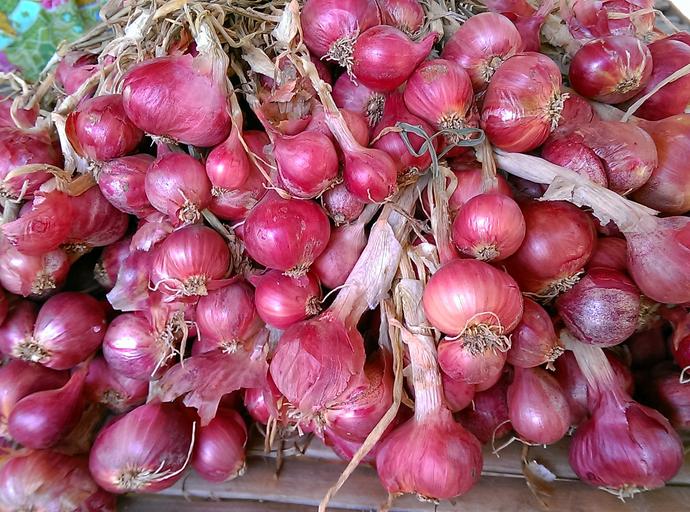Abstract
A review of data on vegetable production and imports in Japanese agriculture suggests that both domestic production and imports play important roles. According to data from 2022, the most valuable domestic vegetable was the onion, valued at 91.7 million yen. This indicates that domestic onion production is booming and demand is also high. On the other hand, the highest price for imports was 2.5 million yen, and although onions occupy an important position just like domestic onions, their value is lower than that of domestically produced onions. Furthermore, garlic accounts for the largest proportion of imported vegetables, reaching 17%. This suggests that imports are increasing as demand for garlic is high and domestic production is not enough to meet the demand. Overall, Japan’s vegetable market has a well-balanced supply of domestic and imported produce according to their respective characteristics and demand, and it appears to be able to respond flexibly to changes in demand and challenges in domestic production.
Domestic price of vegetables under the earth
When examining the trends of domestically grown vegetables in Japanese agriculture, data from 2004 to 2022 shows that certain vegetables have a dominant position in the market. In 2010, onions reached their peak price of 93.6 million yen. However, the current value of onions is 98% of its peak value, indicating that their value in the market has declined somewhat. This could be due to a number of factors, including changes in demand and production, as well as the impact of competing imported vegetables. Similar trends may also be observed for other earthen vegetables. The value and demand for domestically grown vegetables change with the times, but Japanese agriculture continues to adapt to those changes and make efforts to supply a diverse range of vegetables.


The maximum is 93.6Myen[2010] of Onion, and the current value is about 98%
Import price of vegetables under the earth
Looking at the latest data for 2022 on vegetable imports into Japan’s agriculture, the largest import value by prefecture was for onions, at 6.25 million yen. This figure is a new record high, suggesting that the market for imported vegetables is expanding. This trend reflects Japan’s diversifying demand, with imports increasing to fill shortages, especially of out-of-season and high-demand vegetables. Also, looking at the regions, certain regions may play an important role in the imported vegetable market. There may be a high demand for imported vegetables in urban and densely populated areas, with a corresponding concentration of imports. Overall, the imported vegetable market in Japan’s agriculture is on a growing trend and plays an important role in compensating for changes in demand and production limitations.


The maximum is 6.25Myen[2005] of Onion, and the current value is about 39.9%
Import (proportion) value of vegetables under the earth
Looking back at the proportion of imported earthen vegetables in Japan’s agricultural industry, ginger peaked at a high rate of 23.9% in 2004. However, the current proportion of ginger has risen to 38.1% from its peak. This suggests that ginger occupies an important position in Japanese food culture and that demand for it is increasing. In addition, since the proportion of ginger imported is higher than that of other earthen vegetables, there is a possibility that domestic ginger production will not be able to meet demand. This trend is thought to be influenced by a variety of factors, including changing eating habits in Japan, increased demand due to the diversification of cuisine, and growing interest in the health benefits of ginger. Overall, as the proportion of imported earthen vegetables, including ginger, is increasing, Japanese agriculture continues to make efforts to respond flexibly to demand and supply a diverse range of vegetables.


The maximum is 23.9%[2004] of Ginger, and the current value is about 38.1%



Comments